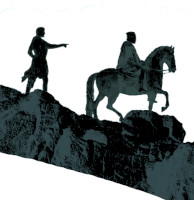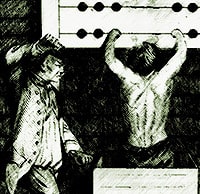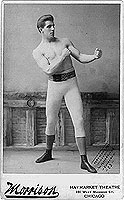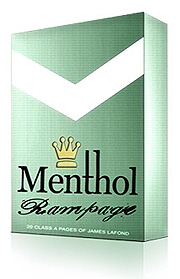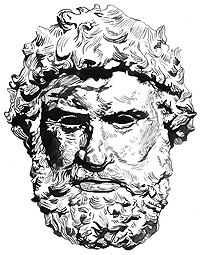…
From Autumn of 2000 through 2002 I did a primary reading of 1152 sources on boxing history and methodology at the Peabody Conservatory and the Enoch Prat Central Library in Baltimore City. While I was able to use the Lidell and Scott Greek English lexicon from 1899 to translate some Greek epigrams and check the questionable poetic translations, I was unable to make any sense of the only available translation of Philostratos’ On the Naked Exercises, in German calligraphy. This was one reason for halting the final fourth volume of The Broken Dance, titled, The Boxer Dread.
An English translation of this work has now been made available from that German source. So The Boxer Dread is being completed.
Written at the end of antiquity, as an attempt to revitalize masculine culture in a decadent period, when most men no longer engaged in combat sports and the sacred circuit was dominated by a small cadre of touring professionals, this text is to ancient combat sports what Vegitus’ manual of military methods was to ancient warfare, a nostalgic attempt to revitalize an ancient and storied tradition that had degenerated.
Based on Philostratos’ Pictures in a Gallery, in which he discussed sacred prize fighting artwork and the painting of the Death of Arrichion, I shall treat him as an intimate expert with access to the sacred sites of the period agons, where rod bearers trained the athletes in preparations for the contests they judged. This would be like the umpires of the MLB World Series, keeping the teams in seclusion for two weeks before the game, overseeing their training personally. This did serve to concentrate a pool of knowledge that would have been available to a sophist visiting these sites.
Welcome to a world without ball sports, where the only athletes were combat athletes, chariot racers and jockeys, the latter two technically vestigial combat sports.
I will note when I have note retained the commentary of the 1936 editor of this translation.
[My annotations will be in brackets.]
James LaFond, Utah, October 3, 2022
…
The Research Quarterly of the American Physical Education Association: Vol. VII MAY, 1936
Philostratos: Concerning Gymnastics
By Thomas Woody
Professor, History of Education School of Education, University of Pennsylvania
I, PHILOSTRATOS AND HIS TIMES1
[Footnote redacted]
[Only the biographical details related in this essay are retained. Mister Woody’s opinions on the actual work are respectfully discarded, as this study is being conducted as A Fighter’s View.]
LAVIOS PHILOSTRATOS, “the Athenian,” native of the isle of Lemnos, is said to have lived from about A.D. 170 till the time of Philip the Arab (244-249). The early part of his education was probably gained in his native isle, or at Athens, at the hands of grammatist and grammaticus, whose training was the usual preliminary for those who would enter upon rhetorical studies at the university. That he continued his training at Athens, whither those of literary bent in those days were wont to turn, is all the more natural since Lemnos, with Imbros and Skyros, constituted at the time the chief foreign possessions of Athens. There, about 190, he studied under such sophists as Proklos, Hippodromos, Antipatros, and at Ephesos under Damianos. His going to Rome is not definitely dated.
After 202, however, probably through the influence of Antipatros, his teacher and one of the most intimate friends of the imperial family, Philostratos became one of the brilliant, learned circle which Julia Domna, the talented, beautiful wife of Septimius Severus, gathered around her. Of his movements but little is known definitely, but
Muenscher infers that he may have been with Severus on his last campaign against Britain in 208, and with Caracalla on the campaign in Gaul in 212, inasmuch as the Empress and her literary circle accompanied the Emperor on his journeys and campaigns. In like manner, it is probable also that he was in Pergamon and Nikomedeia in Asia Minor, in 214-215, and in Antiocheia in Syria, 216-217, in company with Julia Domna and the literary followers of the royal court. At the death of Julia, which followed upon the murder of Caracalla, Philostratos took up residence at Tyros. There, about 217, he published the Life of Apollonius Tyana, which he had undertaken to compose at Julia’s behest. From Tyros he returned to Athens where he enjoyed honor and fame befitting a sophist and one who had been an intimate of the imperial family.
There, in the literary capital of the world, where professional athletics flourished no less than professional letters,
[Amateur athletics, however, had deteriorated and the professional events had become corrupted with scandal, similar to our day, with most spectators having no experience in the actual sport.]
Philostratos wrote his work Concerning Gymnastics, probably sometime between 219 and 230 (as Muenscher believes), the period when Helix was enjoying world-wide fame as an athlete; or, perhaps, as Jüthner holds, some time after the period in which Helix reached the height of his fame, though it may have been produced after the Lives of the Sophists appeared, i.e., after 238. His Lives of the Sophists, a brilliant, readable account of those whom he considered the exemplars of the highest culture of that day, written primarily for entertainment rather than instruction, was composed apparently between 230 and 238.
[Redacted summation]
This work Concerning Gymnastics is to be regarded as a literary essay by an able sophist who has attempted to write a defense of true gymnastics, by which he proposes to show how the evils of the present unenlightened, unscientific practice can be corrected. Written well after middle life, or perhaps only shortly before the author’s death, it probably reflects to some extent the critical attitude of one who sees the new generation around him through somewhat jaundiced eyes. How much of the criticism is his own, and how much belongs to contemporaries whom he imitated is hard to judge. But Jüthner concludes, after a survey of the problem of sources, that Philostratos is indebted to a certain introductory treatise or treatises from which he drew most of the details, and whose general pattern is reflected in his work.
[Now to the actual work of the eminent Sophist of antiquity, who died some 20 years before the Imperial collapse of pagan Rome, a Rome that was shot through with cultural rot, including its corruption of basic masculine traditions borrowed from the Hellenic culture Republican Rome had conquered. In some part, the work of Philostratos, which unfortunately included “Love Letters to a Boy,” prefigured the re-orientation of the empire from the Latin west to the Hellenic east and the revitalizing of the military along ancient Macedonian lines, with Roman generals imitating the hero kings of Ancient Macedon, such as Phillip, Alexander and Phyrrus.]


